Mufflers
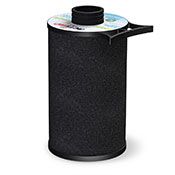
Central Vacuum Mufflers, Silencers, & Exhaust Vents
Central Vacuum Mufflers, Silencers, & Exhaust Vents

Central vacuum mufflers are designed to be attached to the exhaust of your power unit to reduce noise levels of the motor of the system. A central vacuum muffler is normally insulated with noise suppression material to reduce decibel levels. We provide mufflers that not only quiet down noise levels but also filter the exhaust of your central vacuum system. The Activac III and Activac III act as a dual operating muffler and filtration system. These Activac mufflers are a must for anyone suffering from allergies or asthma, or if you wish to filter your exhaust without venting to the exterior of your home.
Mufflers Are Universal For All Central Vacuums If you need assistance, please call us at 1-800-322-2965
Silent Vacuuming with a Central Vacuum Muffler
All vacuum manufacturers seek to lower the noise level their vacuum cleaners produce as much as possible and some have done a great job so far. In reality, the whole burden of reducing the noise level is carried by these small accessories called mufflers. The technology used and the operation mode of these accessories are impressive yet quite easy to understand, so here is a little insight into how central vacuum mufflers work.
 The image to the right shows an example of a central vacuum muffler installed on a common central vacuum. Remember, this popular HEPA exhaust muffler can be used on any central vacuum in the industry today. This will eliminate any extra drilling through the foundation of your home to exhaust undesirable noise levels and minute dust/allergen particles that exhaust out of any central vacuum unit.
The image to the right shows an example of a central vacuum muffler installed on a common central vacuum. Remember, this popular HEPA exhaust muffler can be used on any central vacuum in the industry today. This will eliminate any extra drilling through the foundation of your home to exhaust undesirable noise levels and minute dust/allergen particles that exhaust out of any central vacuum unit.
The sound is produced by the fluctuations in the air pressure. With engines, these fluctuations are caused by the opening and closing of exhaust valves and the entrance of high-pressure gas in the system. Here, it meets the low-pressure one in the pipes and the two collide. However, their collision, or rather overlapping, happens a little further down from the entry spot, which leads to the formation of a low-pressure area. This whole process allows the noise to advance much faster than the gases. As far as the perception of noise is concerned, it is determined by two main factors: the sound wave frequency and the air pressure level. Normally, the noise production increases in direct ratio to the number of sound waves. However, this is not always the case.
All the sound waves that reach the ear at a given moment sum up and produce a certain noise level. The interesting fact is that there can be two opposite sound waves, in which case they cancel each other out. This is the principle used with some headphones. Two sound waves can be in phase, in which case they produce twice as much noise but the frequency remains unaltered. This principle is known as constructive interference. Otherwise, their sum is zero. This principle is known as destructive interference. In this case, the maximum pressure level is reached by the first sound wave at the same time the minimum pressure level is reached by the second.
Central vacuum mufflers conceal a number of holed tubes that block the sound waves the vacuum cleaner produces, thus canceling out the noise. The sound waves and the gases reach inside through the central area of a muffler, after which they hit the muffler wall and are reflected in the main body. The holes in the tubes allow them to move from one chamber to another. Once they reach the last one, they turn and exit the muffler. The resonator chamber is the second chamber inside a muffler. Its length and capacity are calculated to cancel the frequency of the sound wave that enters it. However, these frequencies may vary, so mufflers are designed to be able to cancel a range of frequency rather than a specific one.
There is no term of comparison between an appliance equipped with a muffler and one that does not have such an accessory. The reasons why central vacuum manufacturers seek performance on this level of noise reduction are obvious. Some people can only install their central vacuums around their living area or their neighbors’ living area, so they need their central vacuum cleaners to produce as little noise as possible. This is where the central vacuum mufflers come into play, so they play a crucial role in the manufacturing of comfortable and bearable cleaning equipment.
Why should you use a central vacuum muffler?
All central vacuums use a motor to create suction, some motors are noisier than others. Noise also carries vibration generating around the unit as well as vibration in the walls. Professional installers and technicians will always recommend the central vacuum Activac II HEPA exhaust muffler/filter when completing a new or existing central vacuum installation. Purifies your air and deodorizes it all at the same time.
How do you select the best muffler for your central vacuum system?
Are you trying to lower the noise level coming from the central vacuum? Is there a rattling noise in the house when the vacuum is running? Which is frustrating when you are using the system. First and foremost think of what an automobile muffler does for a car, reduces sound and vibration, a central vacuum muffler does the same for the vacuum. Lessens the noise levels making it easier on the ears.
What kind of central vacuum muffler should you use?
Some mufflers come in different shapes, sizes, lengths, and varied thicknesses. Typically they are constructed from PVC and sound suppressing acoustic foam which absorbs a good majority of noise levels and vibration. All are made to lower the decibel levels of the central vacuum making it quieter, some do a better job than others. They typically dampen the sound level from 1 to 7 decibels, making it more enjoyable to own a central vacuum system.
Whats the best muffler?
A new style muffler dust reducer and purifier have revolutionized the central vacuum muffler industry. It is called the Activac II. It is the industry's first and true certified H E P An exhaust muffler/filter for central vacuums. It can be used on 98% of all central vacuums made today. It contains and traps 100% microscopic allergy pollutants from escaping your vacuum system. No other muffler in the United States can guarantee that. The newest technology and top of the line muffler on the central vacuum market is the all-new activac II-HEPA filter. This new advanced and acoustic designed muffler not only deadens the sound, it also purifies the exhaust air. There are three major reasons for buying the best the first time...1) Sound reduction 2) Purify the air 3) Deodorizing your unit. The Activac II muffler is great for allergy & asthma sufferers.
What is the location of the central vacuum muffler?
Always remember to install the central vacuum muffler on the exhaust pipe that protrudes from the side of the system. Typically on the upper right-hand side of the vacuum. Most mufflers can be attached by glue, metal clamps, or a friction fit in under a minute. You can also extend the exhaust air out of the house by continuing the pipe through the wall. To drive the excess air from the exhaust outside of the home. The total distance should be no longer than 15' including the muffler. As this illustration shows.
Conclusion
Any Central Vacuum expert will definitely advise any consumer to add a muffler or sound-suppressing device when added to a central vacuum it will enhance and better the experience of owning a central vacuum system, making your investment worthwhile. Remember a Central Vacuum cleans the house and with the Activac II HEPA exhaust muffler protects the air.
Even up to 10 years ago, outside venting was required. Times have changed! We've found it is no longer mandatory because today's motors run much cooler and have fans to help control temperature as well as better advanced filtration, making your house greener, energy-efficient, quieter, and healthier environment for you and your family. Using a central vacuum muffler is the best benefit to purify the air you're breathing. * As an example, if someone were to block your mouth from breathing, it'd be the same type of scenario. Just like you need to have fresh air in your lungs and exhale the old air out, motors operate the same way. Happy vacuuming!





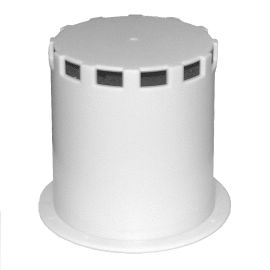

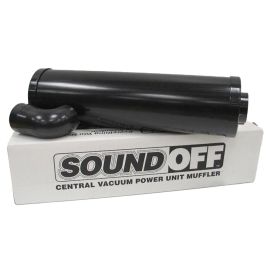
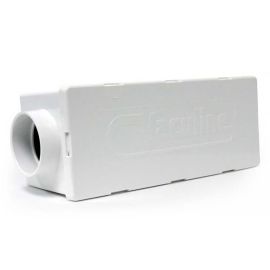
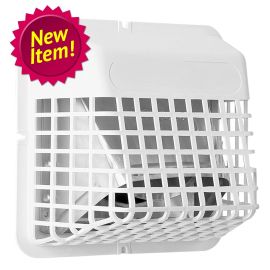
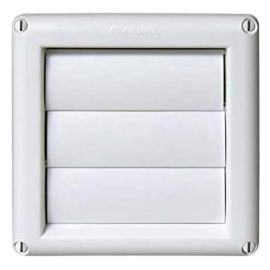

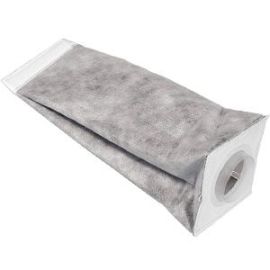
Log In
Create New Account